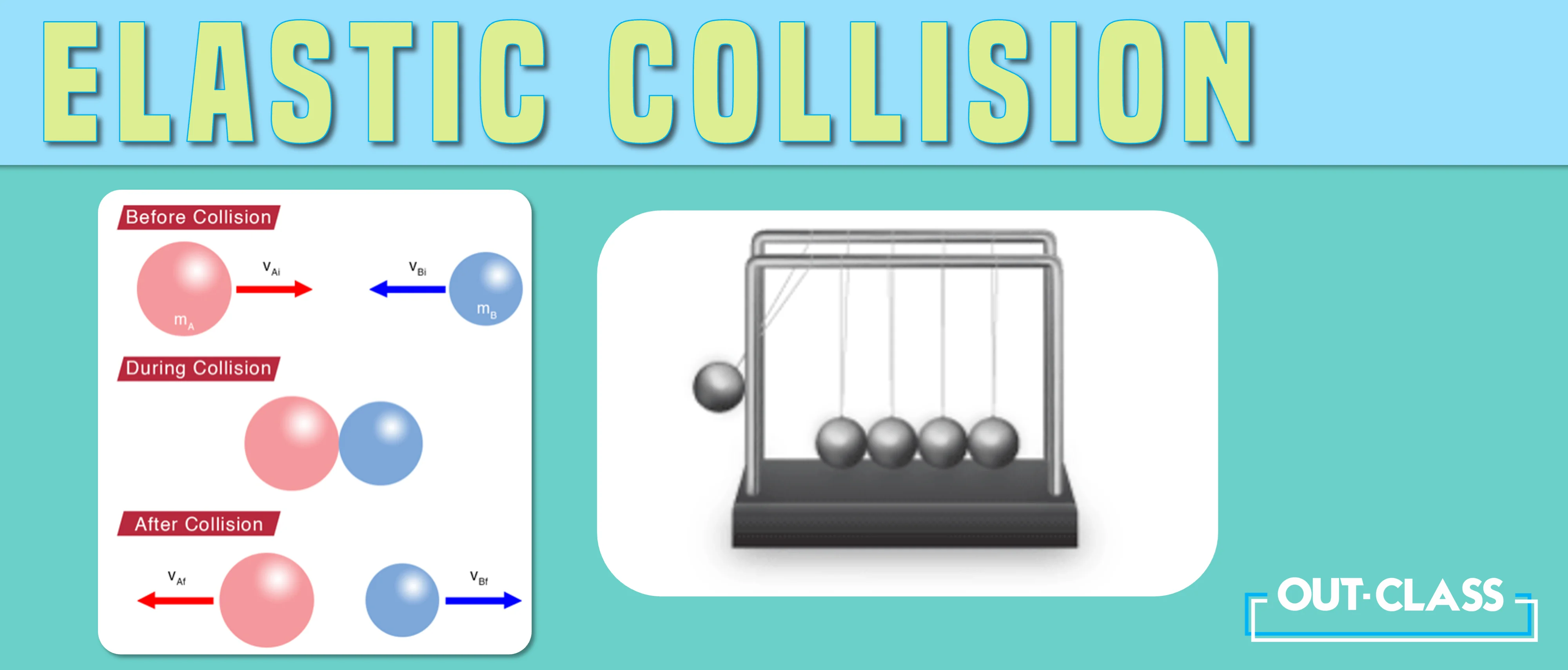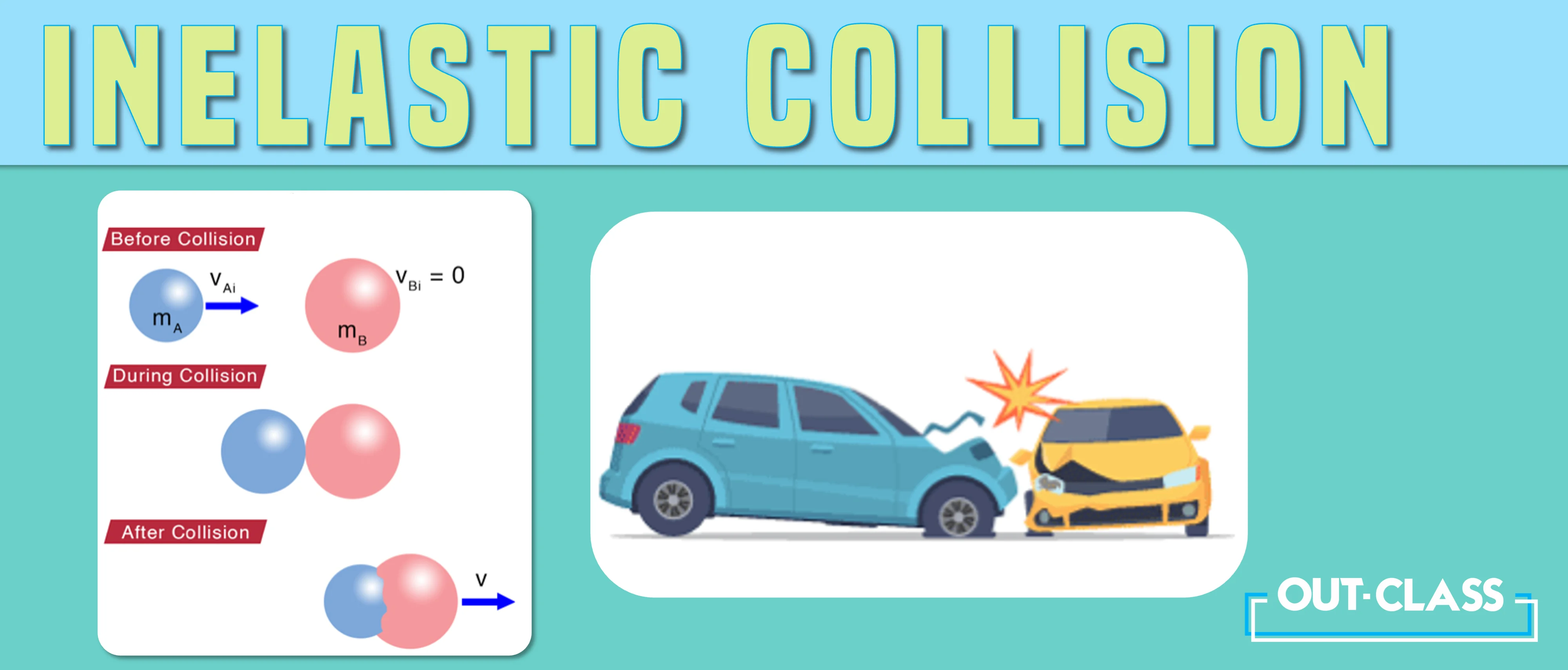In O Level and IGCSE Physics, there are several different ways to describe an object’s movement as well as the interaction between two objects. It helps us learn more about the way things work in the world. One of such interactions is known as a collision.
A collision can be defined as the short-duration interaction between two objects leading to a change in their motion as a result of internal forces’ influences on them.
Types of Collisions
Generally, a collision can be of two types:
-
Elastic Collision
-
Inelastic Collision
In this article, we will be talking about the difference between elastic collision and inelastic collision and how they work with respect to interactions between two objects.
Elastic Collision
What is an Elastic Collision?
An elastic collision happens when there is no net loss in kinetic energy as a result of the collision. This means that when two particles collide and then bounce apart, they move away from each other at different angles and speeds. Here, the kinetic energy is conserved, meaning that the total energy of the system i.e. the two colliding objects, stays the same before and after the collision. The objects keep their original energy and don’t end up losing it in the form of either heat or sound.
Why Should We Assume an Elastic Collision as Perfectly Elastic?
You might be wondering then if perfectly elastic collisions rarely happen then why should we just assume that every elastic collision is perfectly elastic?
Well, it just so happens that in practice, this assumption is actually quite useful. The condition of the need for kinetic energy to be conserved compels this rule to take into account our equations of motion. This then helps us solve problems where otherwise we would be facing too much uncertainty. Therefore, whenever a collision is elastic i.e. when a minimal amount of energy has been lost, it is then considered to be ‘close enough’ to be perfectly elastic.
Perfectly Elastic Collision Examples
An example of a perfectly elastic collision can be between atoms in gases. Examples of elastic collisions (where the loss of energy is minimal) can be collisions between two billiard balls or two trolleys.
Having a perfectly elastic collision in real life is actually quite rare. The reason for this is when it comes to collisions in mechanics the energy lost, although negligible, is indeed lost. So even though such collisions may be considered elastic, they are not perfectly elastic.
Inelastic Collision
What is an Inelastic Collision?
An inelastic collision is a type of collision where there is a significant loss of kinetic energy while momentum continues to be conserved. When two objects collide, they may either get lodged into each other or move away from each other. However, in the process, some of the kinetic energy is lost. That kinetic energy is converted into something else; either heat, sound energy or even material deformation.
Examples of Inelastic Collisions
Experts credit the ballistic pendulum as the best practical device that helps to establish the existence of an inelastic collision. Before the advent of modern instruments, the ballistic pendulum was used to measure the speed of projectiles.
In this device, the projectile is fired and then lodged into a stationary wooden block. Following the collision, there is a significant loss of kinetic energy as it transforms into heat, sound or the cause of some material deformation (within the wooden block). Since momentum must still be conserved, the collision may cause the wooden block to move away at a certain speed. It then starts to behave like a pendulum in which total mechanical or potential energy is conserved.
Formula for Inelastic Collision Used to Calculate the Loss of Kinetic Energy
In the case of the ballistic pendulum quoted above, we may use the following formula:
Loss of Kinetic Energy = Initial Kinetic Energy (KEi) – Final Kinetic Energy (KEf)
To calculate the kinetic energy before and after the collision, you will need to apply the following formula:
KE = 0.5 x m x v 2
Where:
We know that the momentum of the projectile is conserved therefore it should be equal before and after the collision. Now, if we wish to calculate the velocity of the projectile, we will use the following formula:
vP = mP + mBmP √2gh
Where:
-
vP is the velocity of the projectile
-
mP is the momentum of the projectile
-
mB is the momentum of the wooden block
-
h is the maximum height of the block
-
g is the gravitational acceleration
Once you have all the values, you should be able to calculate the loss of kinetic energy during the inelastic collision. It is important to remember that in a perfectly inelastic collision, where the objects stick together, the loss of kinetic energy is typically greater than that of a partially inelastic collision, where the objects move away from each other but still lose some kinetic energy.
Conclusion
In conclusion, understanding the dynamics of elastic and inelastic collisions is paramount for comprehending the behaviour of objects in motion and the transfer of energy during collisions. The distinction lies in the conservation of kinetic energy in elastic collisions, where objects bounce apart with minimal energy loss, compared to inelastic collisions, where a significant loss of kinetic energy occurs as objects either stick together or move away. Real-world applications, such as the ballistic pendulum, exemplify the principles behind these collision types.
For those seeking a deeper understanding of O Level and IGCSE Physics concepts, the Out-Class O Levels/IGCSE Physics course, led by Mr. Usama Javed, offers a comprehensive educational experience.
Most Common Repeated Questions:
Unlock the secrets to acing your CAIE IGCSE & O Level exams with a sneak peek into the most frequently asked questions that have graced the past papers!
- In a safety test, a car of mass 1100kg travels at a speed of 10m/ s and collides with a stationary van of mass 3000kg. After the collision, the car and the van move together with a velocity v. The diagram shows the car and van before and after the collision.

Calculate the velocity v of the car and van after the collision (2)
Calculate the total kinetic energy of the car and van after the collision (2)
State the transfer of energy that occurs in the collision (1) [May/June 2023]
FAQs
Q. What is the difference between elastic and inelastic collisions?
In an elastic collision, there is no net loss of kinetic energy, and the objects bounce apart after the collision. In contrast, an inelastic collision involves a significant loss of kinetic energy, and the objects may either stick together or move away from each other.
Q. Why is an elastic collision considered perfectly elastic?
In practice, perfectly elastic collisions are rare. However, the assumption of a perfectly elastic collision is useful because it allows us to conserve kinetic energy and simplify calculations in physics problems.
Q. Can you provide examples of elastic and inelastic collisions?
Examples of perfectly elastic collisions include collisions between atoms in gases or between billiard balls. Inelastic collisions can be observed in scenarios like a projectile getting lodged into a wooden block, where kinetic energy is lost as heat, sound, or material deformation.
Q. How is kinetic energy calculated in collisions?
Kinetic energy (KE) is calculated using the formula KE = 0.5 × mass × velocity^2. This formula helps determine the kinetic energy of objects before and after a collision, which is essential for analyzing energy transformations.
Q. What is the formula for calculating the loss of kinetic energy in an inelastic collision?
The loss of kinetic energy in an inelastic collision can be calculated using the formula: Loss of Kinetic Energy = Initial Kinetic Energy (KEi) - Final Kinetic Energy (KEf). This formula quantifies the energy dissipated during the collision.
Q. How does momentum play a role in collisions?
Momentum, which is the product of an object's mass and velocity, is conserved in collisions. It helps determine the velocity of objects before and after a collision, providing insights into the interactions between them.
Q. What real-world applications demonstrate elastic and inelastic collisions?
The ballistic pendulum is a practical device that illustrates the principles of inelastic collisions. It involves a projectile getting embedded in a wooden block, leading to energy loss and subsequent motion of the block. Elastic collisions, although less common in everyday scenarios, can be observed in phenomena like billiards or gas molecules colliding.




